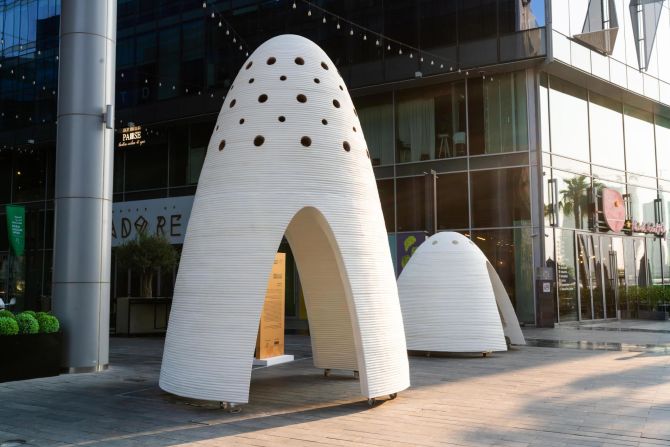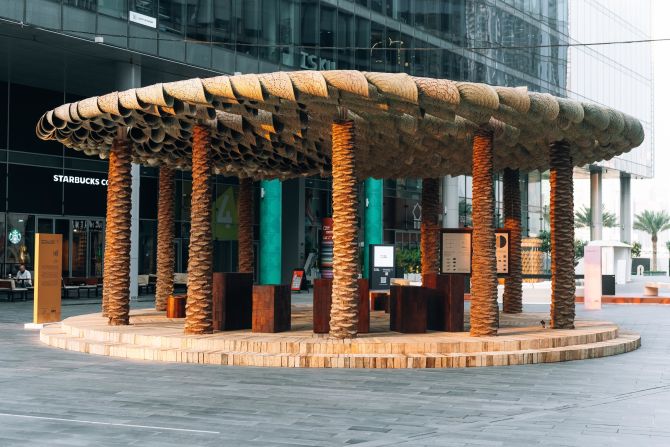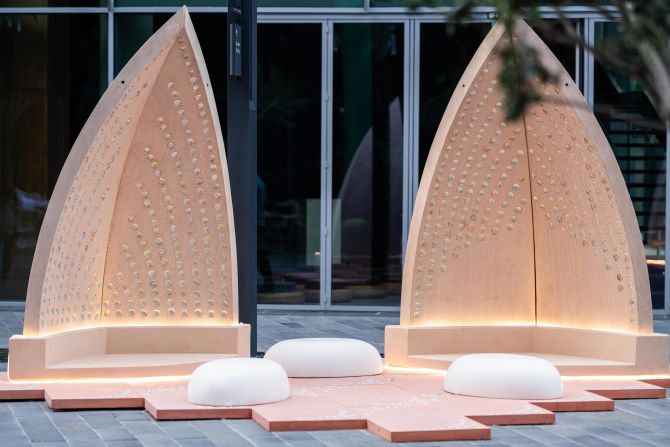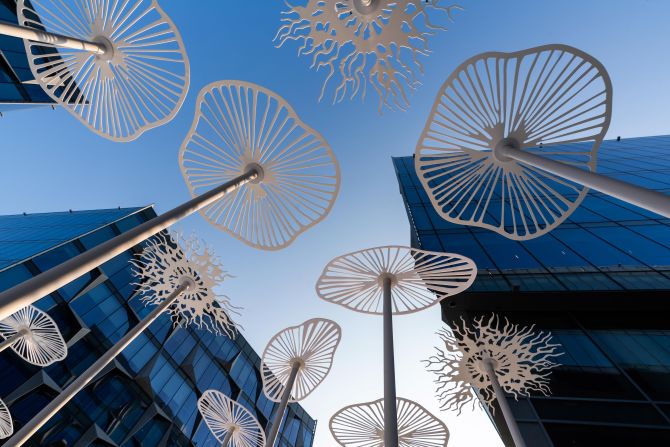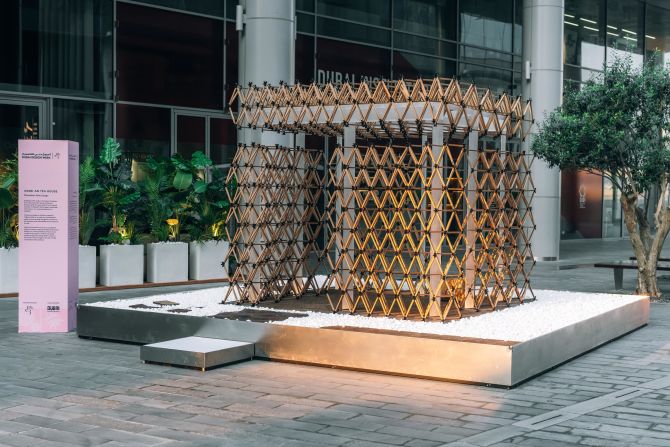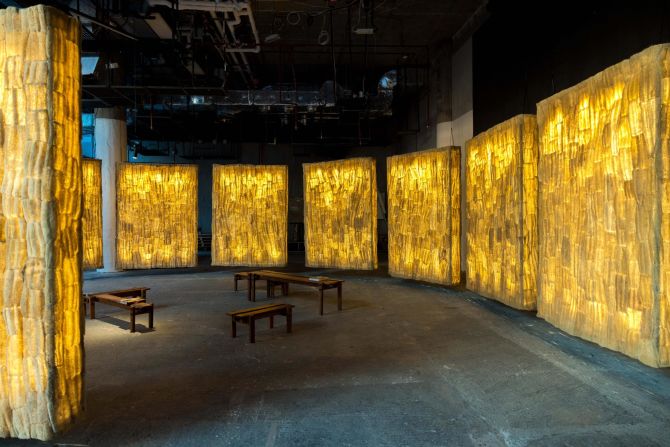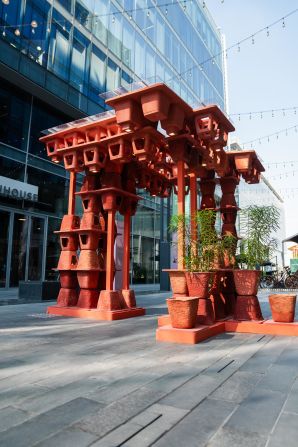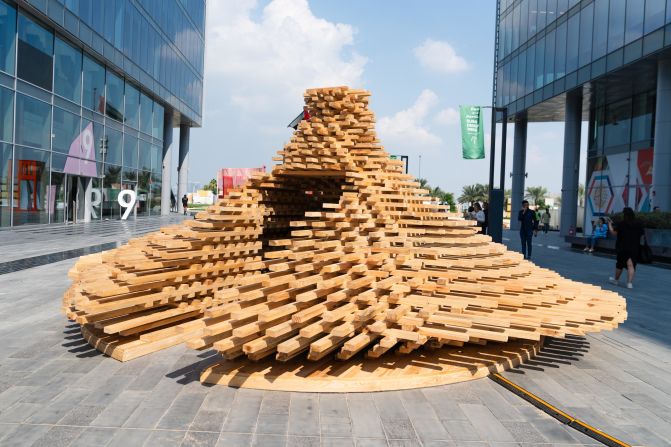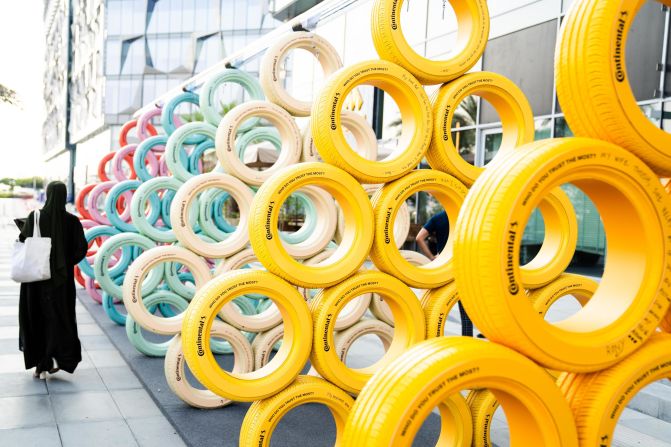Editor’s Note: This CNN series is, or was, sponsored by the country it highlights. CNN retains full editorial control over subject matter, reporting and frequency of the articles and videos within the sponsorship, in compliance with our policy.
When you think of Dubai, you might picture its iconic skyline and breathtaking architecture. Now, a group of architects and designers is embracing sustainable innovation to create installations that are only a fraction of the size of the city’s soaring towers, but no less inspired.
Among them, Dubai-based Syrian Ahmad Alkattan has created a cocoon-style intimate outdoor social space where designers can “hatch” their ideas. Not only does it offer shade and seating for humans — it also provides shelter to pigeons.
Named “Designest,” it is inspired by the historical significance of pigeon towers in the Arabian Peninsula, where buildings that often featured beautiful arches and detailed engravings were built to protect pigeons during harsh weather and collect their feces for use as fertilizer, as well as showcasing the wealth of the tower’s owner.
Designest features pigeon nests at the top of the oblong structure, while three arched entrances at the bottom welcome human visitors. The sections for humans and pigeons are separated, and bird feces collected from the top section will be used as fertilizer for plants in Dubai’s Design District.
Alkattan’s design is part of the annual Dubai Design Week and won first place in its Urban Commissions competition, which invites designers and architects to develop innovative outdoor furniture. Alkattan said the idea for Designest came from analyzing all the potential users of an outdoor structure in Dubai — not just humans but also the prevalent pigeon population.
“The competition asked to design a shading device, a gathering place or a seating area,” he said. “I tried to do all of that together, but I’ve always had an interest in non-human design, and always thought ‘why does everything need to be human-centric?’”
Now in its ninth year, Dubai Design Week (DDW), which runs from November 7-12, is the largest event of its kind in the region, consisting of workshops, installations, exhibitions and talks. This year, more than 30 designs for installations submitted for DDW have been built in the city’s Design District.
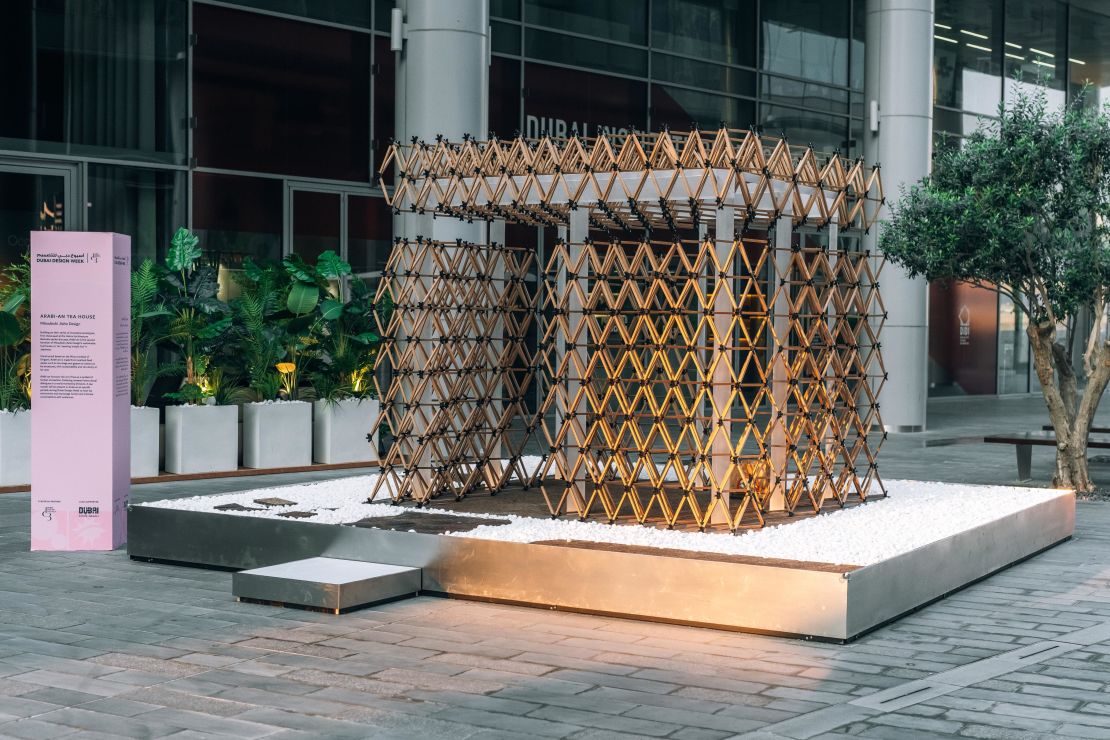
Ahead of the upcoming COP28 climate conference in Dubai, the theme for this year’s design week emphasizes sustainable practices and materials. Mette Degn-Christensen, director of DDW’s flagship design fair Downtown Design, and former director of DDW, said sustainability has been implemented into the event’s design criteria for the past six years, “but this year, it’s really about new forms of sustainable practices, for example not just looking at 3D-printing but also the different kinds of materials you can 3D-print with.”
Alkattan’s Designest structure was originally designed to be 3D-printed using recycled glass fiber reinforced concrete (GFRC), but time, cost and weight constraints meant the prototypes built for DDW use a combination of environmentally friendly methods and materials, including mixing a plant-based plastic alternative with wood powder, and 3D-printing with sand.
“Being environmentally responsible with your design from the very early design stages is no more a niche, it’s more of a necessity,” said Alkattan, who is a freelance concept designer and architect. “That’s why I did my Master’s in renewable energy engineering. It’s not related to architecture, but I wanted to … be aware of how to make my design more sustainable from the early design stages rather than it be an afterthought.”
Other design installations that fit the sustainability theme include Emirati architect Abdalla Almulla’s pavilion “Of Palm,” made entirely from the indigenous palm tree, and Dubai-based architecture and interior design firm TEE VEE EFF’s “Pulp Fractions,” an installation made from waste cardboard and paper pulp that has been pressed, dried, and molded.
“We look for practical designs that are sustainable and scalable across the UAE region,” said Degn-Christensen of the designs that are chosen for DDW. “So [the competition] is a very relevant project not just for what is staged in Dubai Design Week, but where we can see this in the future.”
Designest is Alkattan’s third attempt at winning the Urban Commissions category. “Competitions are the best place to express your ideas without being controlled by the views of your clients or the cost, or the feasibility,” said Alkattan. “It helps to push the boundaries of what is really possible.”
